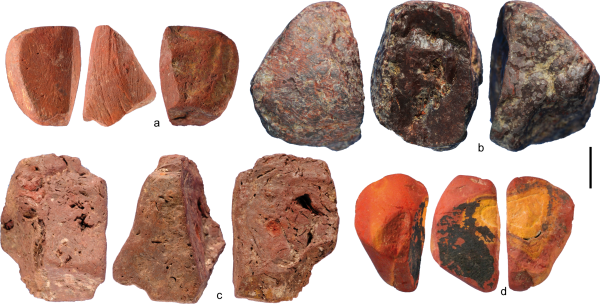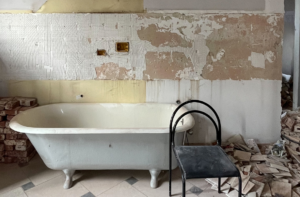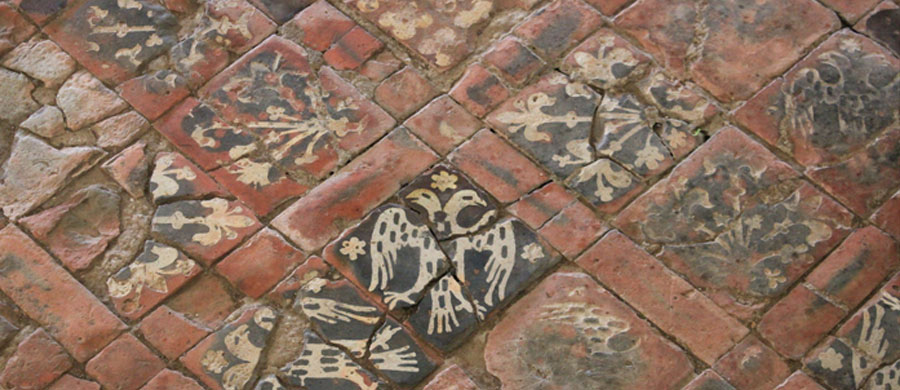¿Sabías que la calidad de las baldosas se reguló durante el Medievo?
Regulaciones Medievales para la Artesanía de Azulejos
Durante la Edad Media, estas piezas planas de cerámica fueron de los primeros productos en recibir una regulación específica de calidad. Os lo contamos:
Durante aquellos tiempos, las baldosas eran consideradas auténticos tesoros y algo realmente costoso, especialmente las que tenían diseños decorativos. Algo tan valioso necesitaba ser protegido para así asegurarse de que los consumidores obtuvieran productos de calidad.
Un trabajo laborioso
El proceso de fabricación de las baldosas empezaba por recoger el material bruto, la arcilla.
Parece sencillo, pero para hacer baldosas para por ejemplo, el suelo de una Iglesia, se necesitaba varios carros a caballo de arcilla.
Lógicamente los ceramistas solían trabajar cerca de un banco de arcilla y lo recogían lo más cerca del carro posible (cerca de la carretera o camino) y es por eso que la palabra en inglés para un bache en la carretera es «Pothole» que se traduce a: «agujero de pote» ó «Agujero de maceta» de donde recogían los alfareros la arcilla para hacer macetas.
Cuando ya tenían la arcilla, había que limpiarla de impurezas (fijándose en separar los valiosos trozos de ocre que serían utilizados para fabricar pigmentos y pinturas)
El ocre se lleva utilizando durante miles de años para decorar nuestro entorno. Desde pinturas rupestres pasando por los antiguos egipcios hasta hoy en día con nuestras baldosas hidráulicas.

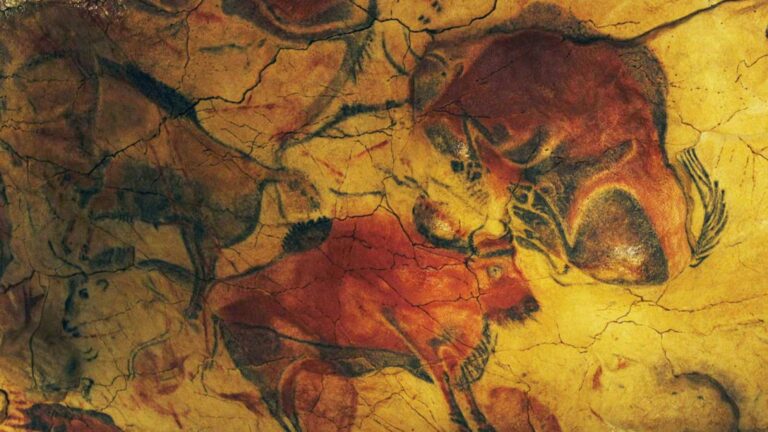

A la baldosa se le daba forma con un molde donde se golpeaba para sacar el aire con la ayuda de una maza de madera.
Una vez sacado del molde, se dejaba secar en el suelo, encima de arena para que no se adhiriese.
(¡Tal y como hacemos nuestro barro cocido hoy en día!)
Ya tendríamos nuestra primera baldosa… sólo faltan unas cuantas miles más…
Aquí viene lo delicado…
El horneado.
Los hornos cerámicos en el medievo necesitaban MUCHISIMA leña, eran costosos y normalmente le pertenecían al Señor de las tierras en las que estuvieran trabajando. Por lo que para poder usarlos se debía pedir un permiso. (En muchos sitios sólo se daba 1 permiso al año).
La leña por su parte también tenía truco. Los árboles también le pertenecían al Señor de los terrenos. Las familias que trabajaban la tierra o «alquilaban» sus casas para explotar las tierras, por lo general tenían permisos de talar un numero determinado de árboles al año aunque en algunos casos sí estaba permitido recoger palos ya caídos de sus bosques. Y esto también había que cargarlo a carro.
¡El horneado debía ser perfecto! ¡Todo el trabajo anterior dependía de ello!
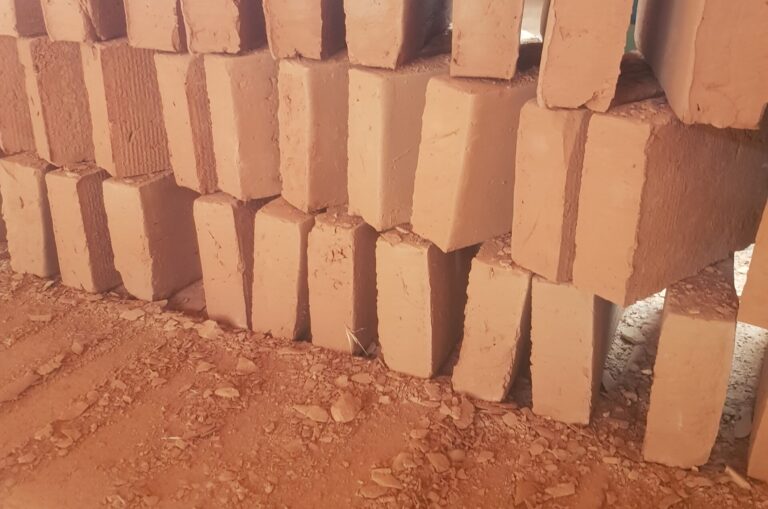
Llegamos al día más esperado. Desde la mañana los alfareros cargaban los hornos cuidadosamente con baldosas. Las baldosas debían estar bien separadas de manera que si estallaba una, no rompería las de al lado, pero a la vez intentando llenar el horno lo máximo posible. Esto tardaría horas.
La temperatura del horno tenia que estar perfecta: demasiado calor y la arcilla se puede quemar o derretir. Y si se enfría demasiado rápido, podría estallar.
Es por esto que los alfareros, sus aprendices y ayudantes se quedarían todo el día, la noche y hasta el día siguiente mientras que el maestro alfarero controlaba la temperatura del horno fijándose en que el color de las llamas fueran el óptimas en cada momento del proceso y que el enfriamiento fuera progresivo y adecuado.
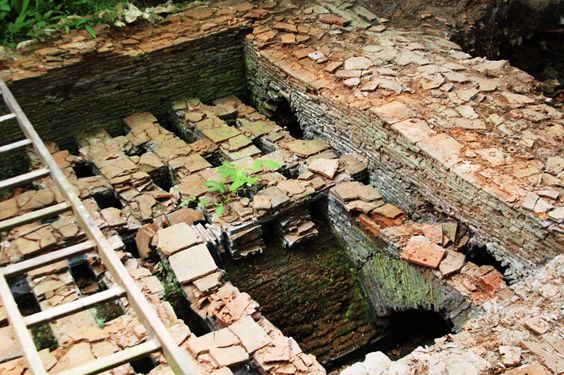
El vigilo se convertía en una pequeña fiesta de celebración, con algún instrumento musical, bebida y comida para celebrar toda la labor que habían desempeñado los meses anteriores y donde las familias les acompañarían durante buena parte de la noche.
La Calidad
Como ven, es un proceso muy largo y costoso y eso se reflejaba en el precio.
Los compradores de este bien tan caro era gente con mucho poder adquisitivo y estos querían garantías. Es por eso que se establecieron reglas y regulaciones que controlaban su producción, calidad y comercio.
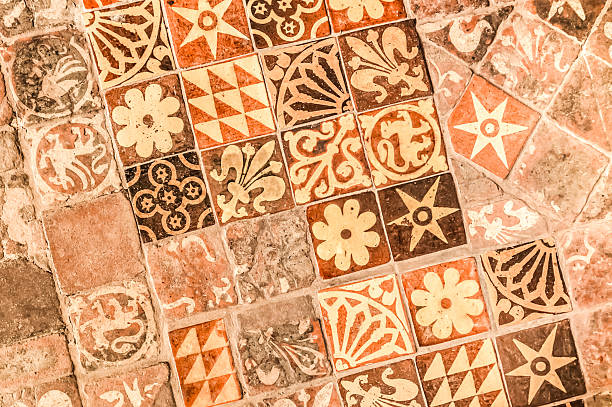
Los gremios, esas asociaciones de artesanos y comerciantes dedicados a diferentes oficios, desempeñaron un papel clave en esta regulación de las baldosas.

Estos gremios no solo se encargaban de supervisar la producción de las baldosas, sino que también controlaban el proceso de venta y comercio.
Establecían precios justos, aseguraban la competencia leal entre sus miembros e incluso establecían marcas o sellos especiales en cada baldosa para indicar su origen y calidad.
¡La certificación medieval de calidad!
Los gremios también se preocupaban por la innovación y la creatividad en la producción de baldosas.
Aunque las regulaciones buscaban mantener una calidad mínima, a veces limitaban la competencia y la innovación. Esto significaba que algunos diseños y técnicas de fabricación podían estandarizarse, ¡pero aún así, había lugar para la imaginación y la belleza en cada baldosa!
¿Qué se pedía para estos niveles de calidad?
En cuanto a lo que se pedía para cumplir con estas regulaciones, Por ejemplo, los estatutos y regulaciones mencionaban los materiales permitidos para la fabricación de las baldosas, como cerámica o piedra, y establecían requisitos de calidad para asegurar su durabilidad y resistencia.
Además, se especificaban las técnicas de fabricación aceptables, como el modelado a mano, el uso de moldes o el esmaltado. También se establecían estándares de calidad en cuanto al espesor uniforme, bordes regulares y la consistencia del vidriado.
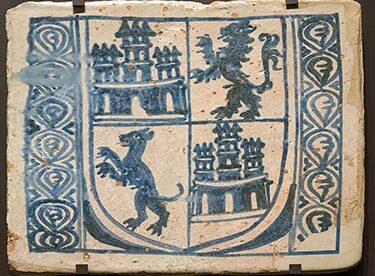
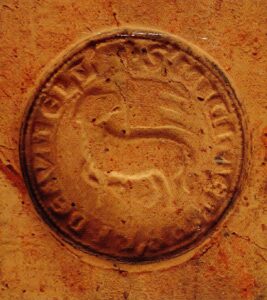
Otro aspecto interesante era el tamaño, grosor y forma de las baldosas. Se establecían medidas estándar para asegurar la compatibilidad y estandarización en la construcción. Y no nos olvidemos de la decoración, ya que en el caso de las baldosas decorativas, los estatutos podían mencionar los diseños y patrones permitidos, así como las técnicas de pintura o esmaltado utilizadas.
Algunas regulaciones requerían que las baldosas llevaran una marca o sello especial que identificara su origen y calidad. Esto brindaba una forma de certificación y garantía para los consumidores, asegurando que estaban adquiriendo un producto de calidad.
¿en qué países tenemos constancia de estas regulaciones?
Italia, España, Francia y Países Bajos son solo algunos de los lugares donde se han encontrado registros de gremios y regulaciones relacionadas con las baldosas. Cada región tenía sus propias características y requisitos.
¿Cómo sabemos estos datos?
Te preguntarás cómo sabemos todo esto sobre la regulación de la calidad de las baldosas durante el Medievo; Los historiadores utilizan una serie de pistas y fuentes para desentrañar los secretos de épocas pasadas.
Los historiadores se han adentrado en un mundo fascinante de documentos y registros para descubrir cómo se regulaba la fabricación de las baldosas en diferentes lugares durante la Edad Media. Te contamos algunos:
Uno de los primeros lugares donde encontraron evidencia de estas regulaciones fue en los estatutos de los gremios. Un conjunto de reglas y regulaciones detalladas escritas por artesanos y comerciantes.
Son tesoros históricos que nos revelaron información valiosa sobre la producción y comercio de las baldosas.



Y no nos podemos olvidar de los documentos legales y registros que han sobrevivido a lo largo del tiempo. Leyes locales que regulaban la fabricación de baldosas. Ahí encontraron información concreta sobre las normas establecidas, los gremios involucrados y las sanciones por incumplimiento.
Los historiadores también han recurrido a las crónicas y escritos de la época para obtener información adicional. Viejos relatos que mencionan la importancia de las baldosas, las técnicas de fabricación y las regulaciones asociadas.
Incluso el arte y la arquitectura nos han dado pistas sobre estas regulaciones. Los diseños y patrones en las baldosas que aún podemos admirar en edificios históricos nos hablan de las técnicas de fabricación y los estándares de calidad que se utilizaban. Un lenguaje visual que nos cuenta una parte de la historia.
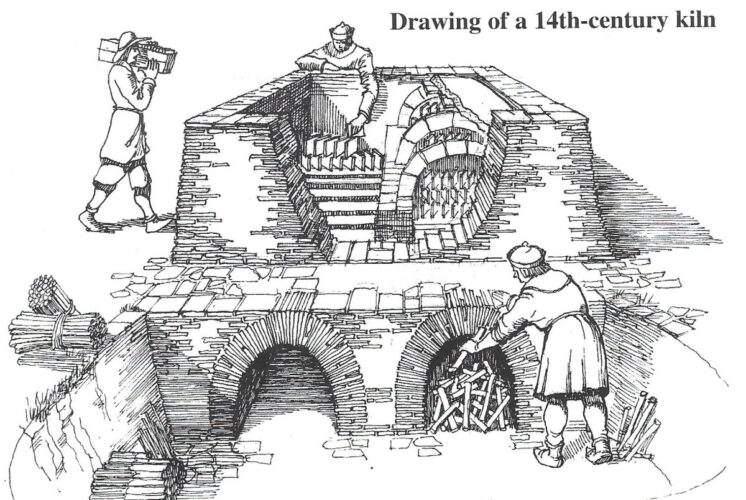
Así que la próxima vez que pises una antigua baldosa o admires los patrones en las paredes de un edificio medieval, detente un momento y piensa en la historia y los esfuerzos que se hicieron para asegurar su calidad.
La ventana a nuestro pasado Medieval que nos muestra cómo, incluso en tiempos remotos, la calidad y la preocupación por los productos eran importantes, lo dedicados que eran los artesanos a su oficio y cómo la calidad siempre ha sido valorada a lo largo de los siglos.
¡recuerda que detrás de su belleza hay toda una historia de regulaciones, fiestas, permisos, gremios y estándares de calidad y cómo estas regulaciones han dejado su huella en la historia y han seguido con nosotros hasta la modernidad.
¡Ahora tienes una razón más para apreciar estas pequeñas obras de arte que han perdurado a través del tiempo!
¿Un poco más de historia?
Desde las monedas de la antigua Mesopotamia hasta las baldosas medievales.
Aunque nos hemos emocionado con la increíble historia de cómo se regulaba la calidad de las baldosas durante el Medievo, debemos admitir que no fueron las primeras en recibir tal atención.
En la antigua Mesopotamia ya se establecían regulaciones de calidad para algo tan cotidiano como las monedas. Los gobernantes de la época implementaron leyes y normas para garantizar que las monedas fueran auténticas, de peso adecuado y hechas con los metales correctos.
En el antiguo mundo romano, nos encontramos con regulaciones incluso en la calidad de los alimentos y medicamentos. Establecieron leyes que regulaban la producción y venta de alimentos y medicinas.
Los antiguos egipcios tenían estándares de calidad para los tejidos, asegurando que fueran duraderos y estéticamente agradables.
En el mundo griego, existían regulaciones para la fabricación de cerámica y vidrio, garantizando su resistencia y belleza.
En la China antigua, encontramos regulaciones detalladas para la producción de seda, una de las joyas de su industria textil. Los chinos eran maestros en la elaboración de esta preciada tela, y establecieron normas para garantizar que cumpliera con los altos estándares de calidad que los distinguían.
Entonces, aunque las baldosas medievales nos han dejado boquiabiertos con su regulación de calidad, debemos recordar que muchas otras cosas ya habían pasado por este proceso mucho antes. Monedas, alimentos, medicamentos, tejidos y más, ya estaban en la mira de las regulaciones y normas de calidad.
Y no podemos dejar de mencionar que estas regulaciones tempranas sentaron las bases para los sistemas de control de calidad que utilizamos hoy en día. Han evolucionado y se han perfeccionado a lo largo del tiempo, pero el concepto fundamental de garantizar que los productos cumplan con ciertos estándares sigue siendo el mismo.
Como ven, es un proceso muy largo y costoso y eso se reflejaba en el precio. Los compradores de este bien tan caro era gente con mucho poder adquisitivo y estos querían garantías. Es por eso que se establecieron reglas y regulaciones que controlaban su producción, calidad y comercio. Los gremios, esas asociaciones de artesanos y comerciantes dedicados a diferentes oficios, desempeñaron un papel clave en esta regulación de las baldosas.

